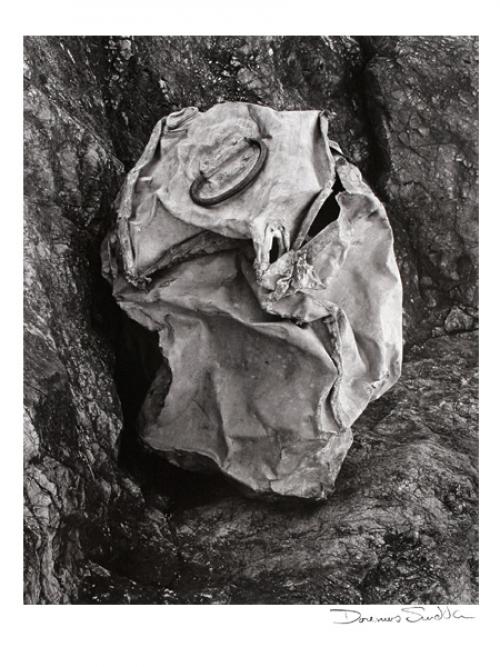Care and Handling of Fine Black-and-White Photographs
Displayed and cared for properly, well-processed black-and-white photographs should last for centuries. In order to maximize the viewing of the print and to care for it correctly, it is important to understand the following:
A black-and-white image is made up of three components: the paper base, the clear gelatin emulsion and the metallic silver particles that make up the image itself. Unlike the dyes found in color photographs, the silver image is not overly sensitive to exposure to light as long as exposure to ultra-violet (UV) rays is avoided. In fact, most fine black-and-white prints show their full range of tonality only when adequately lit.
Therefore, I suggest that prints be displayed well-lit, with the light on the print somewhat brighter than the ambient room light. Track lighting is excellent for print illumination. The higher light level brings out the subtle shadow details and lends an impression of luminance to the whites. Incandescent lighting is always preferable to fluorescent sources, not only due to the high concentration of UV rays in fluorescent lighting, which can damage prints over time, but also because incandescent light contains an unbroken spectrum of colors which makes for more natural viewing.
Extremes of temperature and humidity should be avoided for reasons of dimensional stability. Also, the organic gelatin in the emulsion can be attacked by mildew if the humidity is extremely high. Occasional direct sunlight when filtered through window glass is not damaging as long as it does not cause the print to become too warm and the exposure is limited. Tobacco smoke, cooking fumes and other air-born contaminants can yellow the print and mat board and, over time, chemically damage the image itself. Prints should be displayed/stored in a clean, dry and well-ventilated environment. The surface of a photograph is relatively delicate and can be easily scratched. Prints should therefore always be protected by glass or acrylic in a suitable frame when on display. Acrylic and non-glare glass degrade the viewing of the print and are recommended only if absolutely necessary to protect the print (when glass breakage is a concern, etc.). If viewing conditions are unavoidably harshly lit, anti-reflectance-coated glass is a much better (though more expensive) alternative to non-glare glass. Glazing should never rest directly on the surface of the photograph. Instead, an air space should is provided between print surface and glazing material by means of the supplied window mat.
For maximum permanence prints should be framed with an archival backing (acid-free foam core or archival corrugated board, etc) and framed in a metal frame. Wood and plastic frames contain esters and resins that can damage prints. My personal choice is the Neilson metal frame, profile number 15 in the color Dusk (color number 164). There are many other colors and styles available to match any taste or decor. Should the photograph become damaged, require cleaning or repair of some sort, it is recommended that it be taken to a qualified professional framer/photo archivist. Please do not hesitate to contact me directly if you have any questions or problems with any of my photographs which cannot be handled by an archivist/framer. For removing dust specks, etc. the print can be carefully dusted with a very soft natural-bristle brush (fox hair is best) or a dry lint-free cloth. Artificial bristles can scratch the surface of the print. Cotton archivist's gloves should always be worn when handling unframed prints to avoid soiling the mounting board and the print surface. Fingerprints can, over time, damage the emulsion of a print. Prints not on display for long periods of time should be stored unframed in acid-free storage boxes separated by acid-free interleaving paper, or, alternatively, individually in archival polyethylene sleeves. By following these simple guidelines, a photograph should retain its value and beauty for generations to come.

